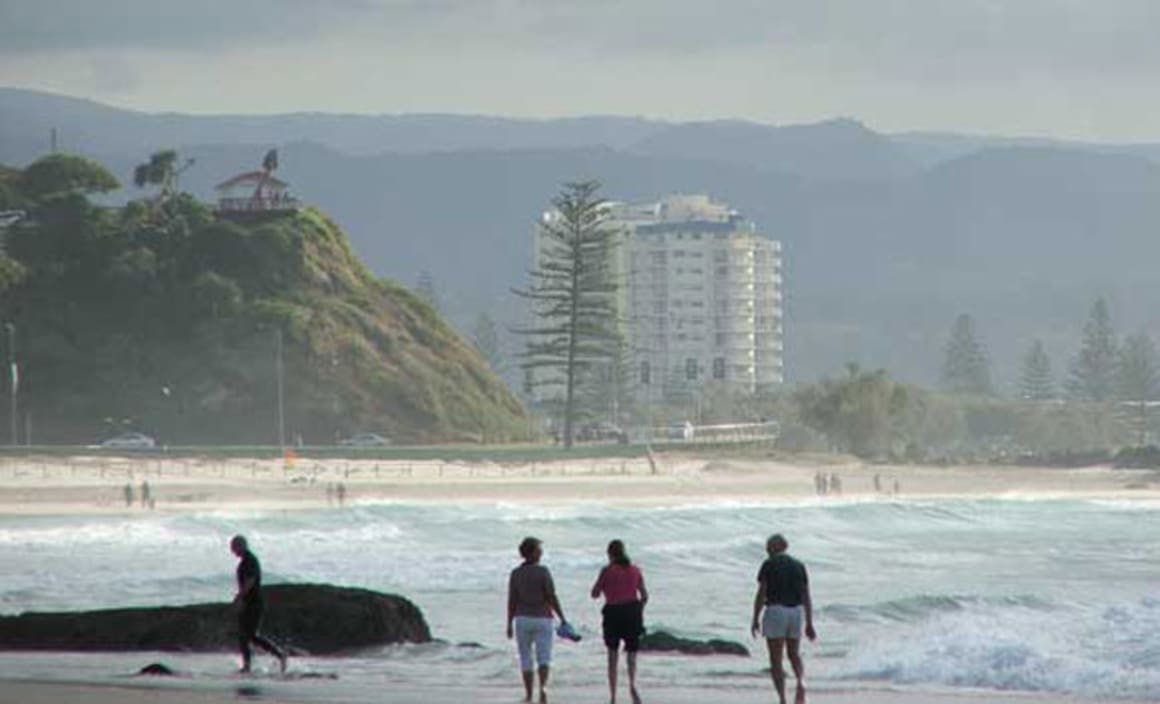The oceans are coming for us: how should Australian communities plan for dire sea level forecasts?

GUEST OBSERVER
You may have seen recent maps showing how sea level rise may effect coastlines worldwide, including Australian cities. These maps have been produced by US-based website Climate Central.
For instance the video shows what they forecast sea level rise would be like in Melbourne with 4℃ and 2℃ of warming. This is not necessarily sea level rise that will occur over the coming century, but the eventual sea level locked in under particular temperature scenarios. It could take under 200 years or up to 2,000 for sea levels to reach these levels.
The picture isn’t pretty.
Maps such as these have triggered heated debate and discussion in different places in Australia (for instance Eurobodalla and Batemans Bay in New South Wales ) as individuals and organisations wrestled with the implications for property values, policy, long term planning and future risk management of our coastlines.
So is it time to sell up?
Coasts are always changing
This mapping helps us realise that coastlines are not static like property boundaries. They are in fact incredibly dynamic and continue to adjust to changes in sea level. The ambulatory nature of coastlines is a point worth remembering.
It is incredibly important to emphasise that the geomorphological, geological, ecological (i.e. dunes or reefs), or built characteristics of your local coastal environment have a huge influence on how coastlines respond to changing sea levels.
In some places beaches are advancing due to an excess in sand supply, while in other places a lack of sand means a coastline can recede (such as Old Bar on the mid-north coast of New South Wales). Furthermore, coral islands in the Pacific are now known to be dynamic in how they change shape and form in response to rising seas.
The rate of sea level rise is important in this regard. The point is, these maps cannot be taken at face value because they mask locally relevant environmental processes that will impact how sea level rise is experienced at any one place.
How are communities adapting to sea level rise?
In countries like Australia local and regional governments are doing more robust local studies forecasting sea level rise and coastal change.
Good examples are the projects Mapping and responding to coastal inundation - undertaken jointly by the Sydney Coastal Councils Group and the CSIRO; and Coastal Vulnerability to Multiple Inundation Sources (COVERMAR) - a partnership between the Sydney Coastal Councils Group and the University of Sydney. Such efforts are much more useful for responding to the threats of sea level rise.
Recently proposed changes to policy and legislation in NSW make explicit the need to consider climate change and the risks it poses to our way of life. The proposed Coastal Management Act goes further and makes explicit mention of the risks posed by extreme storm events (compounded by rising sea levels) to our built environment and life.
The need for local information
Broad-scale maps such as these provide a visceral link between a warmer and wetter world, which can provide the general public with a broad educational tool to help them visualise and grasp what sea level change might look like in their local area.
They are useful for initiating local conversations in communities about the possible locations of critical infrastructure (e.g. nuclear power stations at coastlines) that will have life spans running to hundreds of years or even longer.
But to actually plan for sea level rise we need good, local information. In NSW decisions about coastal management are made mostly by local government. These decisions come about after a detailed study of the local coastal processes and environment, and the values placed on the coastal environment (e.g. property, recreation, aesthetics etc.).
Using a risk-based approach to coastal management and planning will help ensure that new high value development (e.g. infrastructure, power stations etc.) is not placed in areas exposed to rising seas.
The problem is existing development in areas now known to be hazardous with the most comprehensive analyses being presented in the National Coastal Risk Assessment published by the Commonwealth Department of the Environment. A risk-based planning process should seek to avoid repeating those mistakes, but also allow for continued use of those areas until such time as it is unsafe.
Evaluating and making decisions about those risks is incredibly difficult and fraught with complexity (coastal evolution is the result of multiple factors), ambiguity (whose values matter?) and uncertainty (what really will happen in 100 years?). Having said that, coastal planners all over Australia (and around the world for that matter) are grappling with these issues. But, we still have a very long way to go.
esearcher at the Natural Hazards Research Group, University of Sydney and can be contacted here.
ssociate professor in Natural Disaster Geography, University of Sydney and can be contacted here.
PhD candidate in coastal hazard risk management, University of Sydney and can be contacted here.
All are authors for The Conversation.